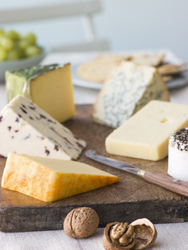Cheese making preserves even more nutrients
Conjugated linoleic acids have attracted the attention of nutritionists due to research results indicating they prevent cancer and heart disease. Health benefits may also include lower blood sugar and reduced accumulated body fat. Accordingly, project partners in BIOCLA have performed studies to optimise production of CLAs in dairy products. One of the crucial factors involved in ensuring that the nutrients reach the consumer's table however is to develop food processing methods that preserve the CLAs. Milk is one of the prime dietary sources but its processed products like yogurt and cheese occupy a much more prominent position on the supermarket shelf than the milk itself. Project partners based in Sardinia at the institute IZCS investigated the processing methods that best preserve the CLAs in milk. Two traditional Italian cheeses were under scrutiny - Pecorino Sardo, a sheep's cheese from Sardinia itself, and Ricotta. The trials measured the fatty acid content including the CLA rumenic acid and its precursor vaccenic acid, oleic and linoleic acids. The tests all centred on variables involved in the cheese making process. Cheese making involves enzyme treatment. Rennet is a naturally occurring enzyme in the stomach of young mammals and the type of rennet used to denature and coagulate the milk protein was varied. Also tested were different fungal lipases that are used to develop flavours in cheeses. Cheese making is a complex process and other factors varied included homogenisation of cream, the use of freeze-dried whey as opposed to natural whey and ripening time. Overall, the only factor that affected the CLA composition of the cheeses was ripening time. The scientists found that there was a ripening effect over the period spanning 1 to 180 days. Good news for manufacturers came when testing cheese made with bovine milk enriched with sunflower and linseed oils for increased CLA content. Quality in terms of sensory properties and composition were unaffected which means that fortified milk can be used to gain that nutritional advantage.







